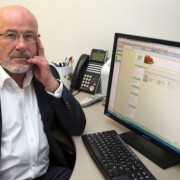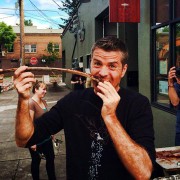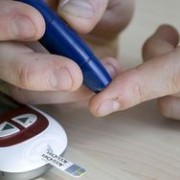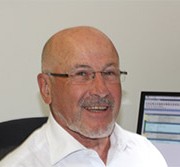GPs appear to be warming to patient portals that let them communicate with patients over the internet.
Karori Medical Centre doctor Peter Moodie said about 40,000 people had registered to use patient portals, including about 4500 at the Karori practice.
The practice has been a pioneer with about 40 per cent of its eligible patients enrolled.
Patients can use its portal to book appointments, check their lab results, request a repeat prescription and send messages to their GP, he said.
“I personally allow people to see all their case notes.”
A patient of the practice myself, Moodie offers to have me enrolled over the phone and five minutes later I have my own password and it’s done.
Online is a record for an antibiotic I was prescribed last year, some notes about my family medical history, my occupation, an admission I smoked until 2000 and a “surprise revelation” (not quite true) that I consume 10 units of alcohol a day.
Karl Cole, a GP who has his own Auckland practice and is an “ehealth ambassador” for the National Health IT Board, said some doctors remain resistant to patient portals, fearing they would increase their workload for no extra benefit and they might get swamped by patient requests.
But he said more GPs were coming round as they realised they could use their features as much or as little as they liked.
“They can just start with appointments booking, and then for approving repeat prescriptions, one patient at a time if they want to. And they can turn it off if people abuse it.”
The top three uses he had found for his portal were to process repeat prescriptions, to follow-up on consultations and to share the results of blood tests.
“There is a concept of an ‘expert patient’ and what I am finding is people are becoming expert patients, more educated, faster.”
Moodie said attempting to diagnose people online was probably the lowest of all the priorities.
“Time will tell, but I just don’t think that is really going to happen, because when people ask for advice, just about invariably the answer is ‘you should come in and we should have a look’.
“If you get it wrong over the phone or internet, you are in trouble.”
The Government is championing patient portals.
Health Minister Jonathan Coleman said GP practices in the central North Island that had enrolled in a “Productive General Practice Programme” that is modelled British National Health Service initiative had been able to free-up time by issuing repeat prescriptions through them.
“Feedback from both staff and patients has been positive.
This programme is improving services and providing better patient care,” he said in a statement on Wednesday.
Moodie said the most widely used patient portal was supplied by Australian company Medtech. But the market is competitive.
Auckland software firm Vensa Health, which says it supplies software to about two-thirds of New Zealand’s 1000 GP surgeries, says it will offer a patient portal next year that will let them provide care in new, “more convenient” ways, using smartphones.
Vensa’s software is mainly used by GPs to send patients reminders about appointments and medications, but chief executive Ahmad Jubbawey said it was “moving in the direction” of supporting online consultations, among other services.
The app would be simple to use and GPs would be able to choose whether to charge for the services they delivered through the portal, he said.
The firm’s 15 staff has been working on the patient portal for two years and announced last month that government grants agency Callaghan Innovation had agreed to cover a fifth of its research and development costs.






